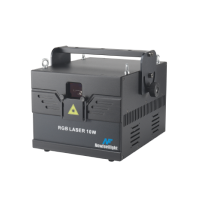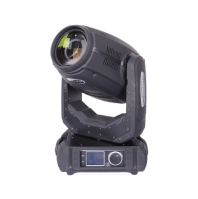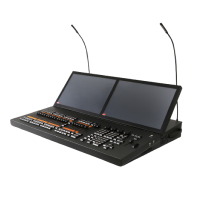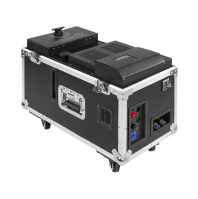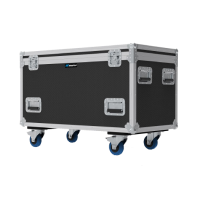Table of Contents
- Stage Laser Light Laser Light Source
- LChoosing the appropriate laser power for your specific site size is crucial
- What distinguishes TT modulation and analog modulation in stage laser lights, and what functions do they serve
- Laser Light Scanning System
- Stage Laser Light Control System
Stage laser lights are widely used in the realm of stage lighting to create an array of captivating visual effects. They employ laser beams generated by lasers as a primary tool. The following provides an overview of the fundamental operating principles behind stage laser lights:
Stage Laser Light Laser Light Source:
The vital component of
stage laser lights is the laser itself. By utilizing the principle of electronic excitation, lasers convert energy into a concentrated, monochromatic, and coherent beam of intense light. Commonly employed types of lasers include gas lasers, solid-state lasers, and semiconductor lasers.
The stage laser light's laser light source serves primarily to control the following effects:
a. Laser Beam:
The
laser light source has the capability to produce highly focused and bright beams. These beams can be employed to generate a range of effects, such as beam scanning, rotation, and deformation. On stage, laser beams can be manipulated to form straight lines, circles, zigzags, and other patterns, thereby injecting dynamism and visual impact into performances.
b. Laser Color:
By adjusting laser modules of different colors, the laser light source can achieve diverse color effects. Stage laser lights are capable of emitting single-color lasers, including red, green, and blue, while also enabling the mixing of these colors to produce additional hues. By manipulating the color of the laser light source, an assortment of light and shadow effects can be created to establish distinct atmospheres and evoke various emotions during performances.
c. Laser Pattern:
Through the implementation of specialized optical devices and control systems, the laser light source can generate a multitude of pattern effects. Stage laser lights can project an assortment of patterns, such as starry skies, flying particles, geometric shapes, and text, thereby infusing the stage with liveliness and intrigue. These patterns can be displayed either statically or with dynamic alterations, harmonizing with music, dance, or actor performances to enhance the overall stage effect.
d. Laser Movement:
The laser light source has the capacity to control the direction and trajectory of the beam by utilizing devices like scanners. Stage laser lights facilitate the scanning, rotation, shaking, translation, and other motion effects of the beam, allowing it to traverse, intertwine, or pursue paths on the stage. This dynamic movement of the laser beam enhances visual dynamics and depth. Furthermore, this laser motion can be synchronized with other stage lights and the rhythmic patterns of music, resulting in stunning visual effects.
e. Laser Motion:
Laser light sources can manipulate the direction and path of the beam using devices like scanners. By utilizing stage laser lights, the beam can perform various movements such as scanning, rotating, shaking, and translating, enhancing visual dynamics and creating a sense of depth. Synchronization of laser motion with other stage lights and music rhythms enables the creation of stunning visual effects.
It is important to adhere to relevant safety regulations when using laser lights to ensure the safety of both the audience and performers. Direct exposure of laser light to human eyes should be avoided, and the intensity and range of the laser beam should be controlled within reasonable limits.
2. What is the power range of stage laser light sources, how does power relate to wavelength, and how can overall power be calculated?
Stage laser light sources typically employ semiconductor lasers or gas lasers, each with its own power range.
Semiconductor lasers usually range from a few milliwatts (mW) to several hundred watts (W). Common visible semiconductor laser wavelengths include red (e.g., 630-680 nm) and green (e.g., 510-550 nm), as well as blue (e.g., 440-480 nm) in the ultraviolet range.
Gas lasers typically range from a few watts (W) to tens of kilowatts (kW). Examples of common gas lasers are carbon dioxide lasers with a wavelength of approximately 10.6 microns and argon ion lasers with wavelengths of 488 and 514 nanometers.
There is no direct mathematical relationship between the power and wavelength of a laser source. Power refers to the total energy output by the laser light source, measured in watts (W), while wavelength represents the light wavelength of the laser beam, measured in nanometers (nm). Different laser types emit different power levels at specific wavelengths.
To calculate the overall power of stage laser lights, one must consider the combined power of multiple
laser light sources. For instance, if there are two laser light sources with powers P1 and P2, the overall power would be P_total = P1 + P2. Simply add up the power of all laser sources to determine the overall power. It's important to note that this is a simplified example, and actual scenarios may be more complex, taking into account factors like laser stability and modulation methods.
Choosing the appropriate laser power for your specific site size is crucial.
The projection range of laser light can be categorized into indoor and outdoor settings.
For indoor environments:
- Spaces under 200 square meters: A 5W laser is suitable. Alternatively, one to two watts can be used for areas of tens of square meters.
- Areas ranging from 200 to 500 square meters: It is recommended to employ a 10W laser.
- Spaces exceeding 500 square meters: It is strongly advised to utilize a 20W laser for optimal results.
Regarding outdoor locations:
- A 30W laser can project over a distance of approximately 1 kilometer.
- A 60W laser can cover a range of 2 to 3 kilometers.
- An 80W laser is capable of projecting up to 4 to 5 kilometers.
To accommodate the number of people attending the venue, the following recommendations are suggested:
For venues accommodating 200 to 500 people:
- Implement 8 to 16 indoor 10W lasers.
- Utilize 6 to 8 900W fog machines.
For sites accommodating 1000 to 3000 people:
- Employ 8 to 16 30W lasers.
- Incorporate 8 to 16 1500W fog machines.
For sites accommodating 3000 to 7000 people:
- Utilize 16 to 30 30W lasers.
- Incorporate 16 to 30 1500W fog machines.
It is important to note that the laser products available on our website share a similar exterior design but possess different power capacities. The power of the laser determines the brightness and projection range, with higher total power resulting in brighter lights and wider coverage.
The process of beam forming involves guiding the laser beam through a sequence of optical elements, including lenses, mirrors, and gratings. These elements enable the adjustment of beam characteristics, such as focus, shape, and size.
What distinguishes TT modulation and analog modulation in stage laser lights, and what functions do they serve?
Beam modulation plays a crucial role in generating diverse visual effects in stage laser lights by rapidly modifying the laser light's intensity, color, or direction. Various techniques, such as rotatable gratings, electro-optic modulators, and acousto-optic modulators, are commonly employed for beam modulation.
TT modulation (TTL Modulation) and analog modulation (Analog Modulation) are two distinct methods used to control and apply laser lights, each with its own characteristics and functions. Let's explore their dissimilarities and purposes:
a. TT modulation (TTL Modulation):
TT modulation is a digital modulation technique that utilizes TTL (Transistor-Transistor Logic) signals to govern the laser light's on/off switch. Through TT modulation, the laser light's output can be in one of two states: on or off. By manipulating the high and low levels of the TTL signal, one can control the laser light's brightness and flashing frequency. TT modulation offers advantages such as user-friendliness, excellent real-time performance, and suitability for high-speed flickering effects. However, due to its binary nature, TT modulation cannot achieve continuous adjustments in brightness.
b. Analog Modulation:
Analog modulation is a continuously adjustable method that regulates the laser lamp's output brightness by modifying the voltage or current of the input signal. This modulation technique enables smooth and uninterrupted changes in brightness, ranging from complete darkness to full power. Consequently, it is commonly utilized in stage lighting effects that require seamless gradients. Analog modulation typically employs an analog control circuit or a digital-to-analog converter to generate a continuously varying control signal, allowing for precise brightness control.
Effects:
- TT modulation is well-suited for special effects that demand high-speed flashing and swift switching, such as fast flashes and strobe effects. It finds frequent application in creating dynamic and rapidly changing visuals in stage performances, light shows, and stunt displays.
- Analog modulation is ideal for lighting effects that require continuous variations and smooth gradients, such as color gradients and brightness adjustments. It is commonly used in stage performances, stage background lighting, and the creation of atmospheric effects to achieve diverse and visually captivating lighting effects.
It is important to note that different stage laser lights may support different modulation methods. To determine the specific modulation methods and functions supported by a particular device, please refer to the equipment's specifications and the manufacturer's instructions.
Laser Light Scanning System:
The laser beam control system is utilized to regulate the movement of the laser beam, employing a combination of two rotating mirrors. One mirror enables horizontal scanning, while the other facilitates vertical scanning. Through this mechanism, the laser beam can generate diverse patterns and trajectories on the stage.
The scanning speed of the galvanometer in the stage laser system plays a pivotal role in determining the laser effect. Typically, scanning speeds range from 15K to 50K. This scanning speed governs the velocity and precision at which the laser beam traverses through space, thereby influencing the quality and seamless nature of the projected laser patterns and effects.
Lower scanning speeds, such as 15K or 20K, result in relatively slower movement of the laser beam. In scenarios involving rapidly changing laser effects, this sluggishness can lead to a disjointed sensation between patterns or effects, lacking the desired smoothness. For instance, in a continuous laser animation, a lower scan speed may cause the lines to appear jagged rather than fluid and coherent.
Conversely, higher scan speeds like 30K, 40K, or 50K propel the laser beam at a faster pace, ensuring smoother patterns and effects. The enhanced speed of scanning empowers the laser beam to faithfully follow the predetermined path, generating continuous and seamless motion. This capability proves crucial when drawing intricate laser patterns or achieving swift dynamic effects.
Overall, higher scan speeds generally yield superior laser outcomes, presenting patterns and animations that appear sleeker and more organic. However, it is important to note that the actual effect is influenced by various other factors, including laser power, laser color, projection surface, and more. Consequently, when selecting a stage laser system, it is vital to consider the galvanometer's scanning speed along with other technical parameters to meet the specific requirements for the desired laser effects.
Stage Laser Light Control System
The control system plays a crucial role in managing the stage laser light, encompassing the adjustment of laser power, beam characteristics, and scanning system movement. It facilitates remote control and programming by establishing connections with a light console or computer via DMX, ILDA protocol, or other communication methods.
The control system of a laser light system can be categorized into two types: built-in and external systems. The built-in system refers to the self-contained system integrated within the laser light itself. Once powered on, it operates automatically without requiring any adjustments. For information on external systems, please refer to the following paragraph.
Which software options are available for controlling stage laser lights?
There exists a wide array of software options for controlling stage laser lights. Presented below are some commonly utilized software applications:
1. Pangolin Beyond: Pangolin Beyond is a professional laser light control software renowned for its powerful functionality and flexible user interface. It supports the control of multiple laser projectors, offering advanced graphics rendering capabilities and timeline editing functions.
2. Laserworld Showeditor: Laserworld Showeditor is a user-friendly laser light control software designed for laser shows and performances. It provides an intuitive interface along with a variety of special effects, supporting timeline editing and real-time control.
3. Pangolin QuickShow: Pangolin QuickShow is a laser light control software designed for entry-level users. It features a simple operational interface, basic special effects, and facilitates the creation of simple laser shows and performances.
4. Laserworld Showeditor FREE: Laserworld Showeditor FREE is a free laser light control software suitable for laser light project control. While relatively straightforward, it still enables the creation of basic laser effects and sequences.
5. Phoenix Showcontroller: Phoenix Showcontroller is a comprehensive laser light control software offering advanced special effects and editing functions. It supports multiple laser control interfaces and provides an extensive range of laser effects and presets.
It is important to note that different brands and models of laser lights may require specific control software. Therefore, it is advisable to determine the brand and model of the laser light beforehand and consult the official website or documentation for the recommended software and compatibility information.
In summary, stage laser lights utilize lasers to generate high-intensity, monochromatic, and coherent beams, which are manipulated through beam forming and modulation techniques. The control system governs the movement of these beams via a scanning system, enabling the creation of captivating laser effects on stage.







